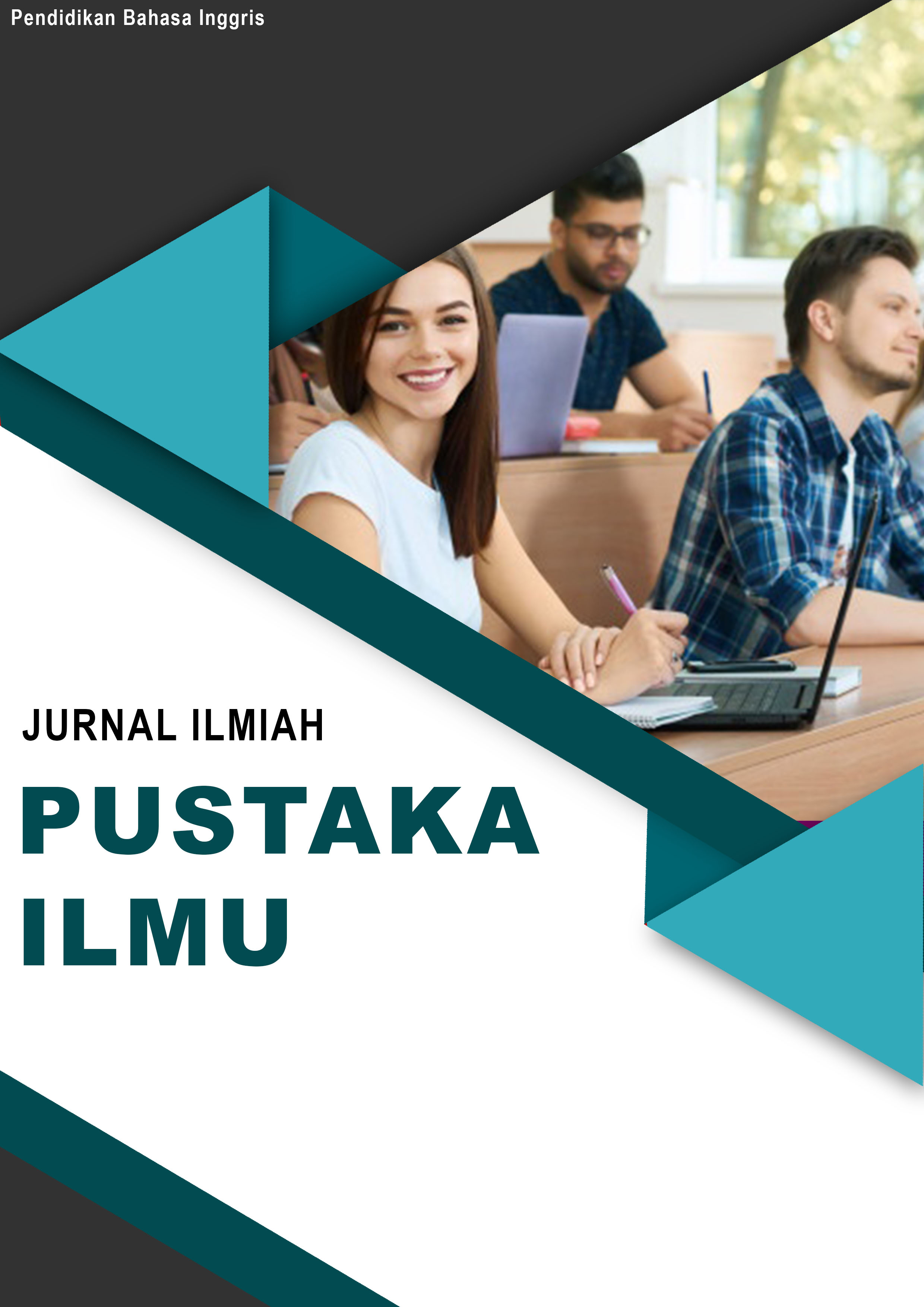THE LIFE PRINCIPLES OF BUSHIDO AS REFLECTED IN EX-SAMURAI IN JHON ALLYN’S 47 RONIN
Kata Kunci:
Bushido, Humanism Theory, 47 Ronin.Abstrak
This research analyzes an issue of the life principles of Bushido inside the novel entitled 47 Ronin. The purpose of this research is to describe Oishi Koronoshuke as the main character who is believed in Bushido and holds the life principles of Bushido as described in Ex-Samurai in Jhon Allyn’s 47 Ronin. Moreover, data were collected in forms of dialogues and narrations. By applying descriptive qualitative method, the researchers will describe the analysis to overcome the problem stucturally. Further, to avoid broader discussion, the researchers only focuses on dialogues and narrations which taken from Oishi Koronoshuke as the main character. Finding showed as six principles of Bushido that stated in the theory, only five of those principles appear; Yu (Brave), Jin (Love and Doing Good), Rei (Respect), Meiyo (Honor), Chugo (Loyalty) in the novel entitled 47 Ronin. As the conclusion, the novel entitled 47 Ronin by Jhon Allyn’s is reflecting about the life principles of Bushido, although Oishi Koronoshuke is ronin (Ex-Samurai) is still holding the life principles of Bushido. Bushido teaching belief Samurai to be a better warrior, better society and better future by having good attitudes and to love other people.
Referensi
Aminatun, D., Ngadiso, N., & Marmanto, S. (2019). Applying PLEASE strategy to teach writing skill on students with different linguistic intelligence. Teknosastik, 16(1), 34–40.
Ayu, M., Diem, C. D., & Vianty, M. (2017). Secondary school students’ English literacy: Use of interactive read aloud instructional strategy. International Journal of Applied Linguistics and English Literature, 6(7), 292–299.
Berlinda, M. (2015). Teachers’ Beliefs On The Use Of Authentic Materialis To Teach Listening. UNS (Sebelas Maret University).
Damayanti, D., & Subriadi, A. P. (2017). Relationship Electronic Word of Mouth With College Image. IPTEK Journal of Proceedings Series, 3(2), 186–191.
Gulö, I. (2014). Unique characteristics of Nias language. International Journal of English and Education, 3(3), 26–32.
Kardiansyah, M. Y., & Salam, A. (2020). The Translator’s Strategy as a Cultural Mediator in Translating Indonesian Novel into English. 4th International Conference on Language, Literature, Culture, and Education (ICOLLITE 2020), 413–418.
Mandasari, B. (n.d.). FACTORS INFLUENCING TEACHERS’BELIEFS ON THE USE OF AUTHENTIC MATERIALS TO TEACH LISTENING.
Mandasari, B. (2016). An Analysis of Teachers’ Beliefs toward Authentic Materials in Teaching Listening. Teknosastik, 14(1), 19–25.
Mandasari, B., & Wahyudin, A. Y. (2021). Flipped Classroom Learning Model: Implementation and Its Impact on EFL Learners’ Satisfaction on Grammar Class. Ethical Lingua: Journal of Language Teaching and Literature, 8(1), 150–158.
Meliasari, R., Ngadiso, N., & Marmanto, S. (2018). The Picture Word Inductive Model: Its Effectiveness to Teach Writing Viewed from Students’ Interest. International Journal of Language Teaching and Education, 2(3), 248–258.
Muliyah, P., & Aminatun, D. (2020). Teaching English for Specific Purposes in Vocational High School: Teachers’ Beliefs and Practices. Journal of English Teaching, 6(2), 122–133.
Muliyah, P., Rekha, A., & Aminatun, D. (2020). Learning from Mistakes: Students’ Perception towards Teacher’s Attitude in Writing Correction. Lexeme: Journal of Linguistics and Applied Linguistics, 2(1), 44–52.
Oktaviani, L., Mandasari, B., & Maharani, R. A. (2020). IMPLEMENTING POWTOON TO IMPROVE STUDENTS’INTERNATIONAL CULTURE UNDERSTANDING IN ENGLISH CLASS. Journal of Research on Language Education, 1(1).
Pranoto, B. E., & Afrilita, L. K. (2019). The organization of words in mental lexicon: evidence from word association test. Teknosastik, 16(1), 26–33.
Pratiwi, Z. F., & Ayu, M. (2020). THE USE OF DESCRIBING PICTURE STRATEGY TO IMPROVE SECONDARY STUDENTS’SPEAKING SKILL. Journal of English Language Teaching and Learning, 1(2), 38–43.
Puspaningtyas, N. D., & Ulfa, M. (2021). Students’ Attitudes towards the Use of Animated Video in Blended Learning. The 1st International Conference on Language Linguistic Literature and Education (ICLLLE).
Puspita, D., & Pranoto, B. E. (2021). The attitude of Japanese newspapers in narrating disaster events: Appraisal in critical discourse study. Studies in English Language and Education, 8(2), 796–817.
Qodriani, L. U., & Kardiansyah, M. Y. (2018). Exploring Culture in Indonesia English Textbook for Secondary Education. JPI (Jurnal Pendidikan Indonesia), 7(1), 51–58.
Rido, A., & Sari, F. M. (2018). Characteristics of classroom interaction of English language teachers in Indonesia and Malaysia. International Journal of Language Education, 2(1), 40–50.
Saifuddin Dahlan, F. H. (2013). THE INFLUENCES OF PERSONALITY AND COGNITIVE PERCEPTION TOWARDS THE STUDENTS’INTENTION TO USE DATABASE SOFTWARE AT THE COMPUTERIZED ACCOUNTING VOCATIONAL COLLEGES IN LAMPUNG PROVINCE. Universitas Lampung.
Sari, F. M. (n.d.). UNDERGRADUATE STUDENTS’ATTITUDES TO THE IMPLEMENTATION OF WHATSAPP GROUP AS THEIR LEARNING MEDIA IN THE EFL CLASSROOM. Section Editors.
Simamora, M. W. B., & Oktaviani, L. (2020). WHAT IS YOUR FAVORITE MOVIE?: A STRATEGY OF ENGLISH EDUCATION STUDENTS TO IMPROVE ENGLISH VOCABULARY. Journal of English Language Teaching and Learning, 1(2), 44–49.
Sinaga, R. R. F., & Pustika, R. (2021). EXPLORING STUDENTS’ATTITUDE TOWARDS ENGLISH ONLINE LEARNING USING MOODLE DURING COVID-19 PANDEMIC AT SMK YADIKA BANDARLAMPUNG. Journal of English Language Teaching and Learning, 2(1), 8–15.
Sulistiani, H., Muludi, K., & Admi Syarif, A. S. (n.d.). Peer Review: Implementation of Various Artificial Intelligence Approach for Prediction and Recommendation of Personality Disorder Patient.
Sulistiani, H., Muludi, K., & Syarif, A. (2019). Implementation of Dynamic Mutual Information and Support Vector Machine for Customer Loyalty Classification. Journal of Physics: Conference Series, 1338(1), 12050.
Sulistiani, H., Muludi, K., & Syarif, A. (2021). Implementation of Various Artificial Intelligence Approach for Prediction and Recommendation of Personality Disorder Patient. Journal of Physics: Conference Series, 1751(1), 12040.
Sulistiani, H., & Tjahyanto, A. (2016). HETEROGENEOUS FEATURE SELECTION FOR CLASSIFICATION OF CUSTOMER LOYALTY FAST MOVING CONSUMER GOODS (CASE STUDY: INSTANT NOODLE). Journal of Theoretical & Applied Information Technology, 94(1).
Sulistiani, H., & Tjahyanto, A. (2017). Comparative Analysis of Feature Selection Method to Predict Customer Loyalty. IPTEK The Journal of Engineering, 3(1), 1–5.
Utami, A. R., Aminatun, D., & Fatriana, N. (2020). STUDENT WORKBOOK USE: DOES IT STILL MATTER TO THE EFFECTIVENESS OF STUDENTS’LEARNING? Journal of English Language Teaching and Learning, 1(1), 7–12.
Yunara, Y. Y., & Kardiansyah, M. Y. (2017). Animus Personality in Martin’s A Song of Ice and Fire: A Game of Thrones. Teknosastik, 15(1), 7–13.


